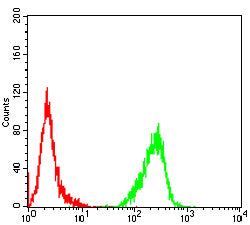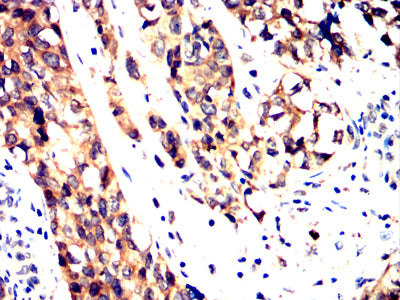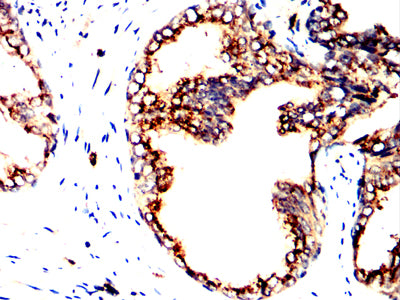




| WB | 咨询技术 | Human,Mouse,Rat |
| IF | 咨询技术 | Human,Mouse,Rat |
| IHC | 1/200 - 1/1000 | Human,Mouse,Rat |
| ICC | 技术咨询 | Human,Mouse,Rat |
| FCM | 1/200 - 1/400 | Human,Mouse,Rat |
| Elisa | 1/10000 | Human,Mouse,Rat |
| Aliases | CYPD; CYP-40 |
| Entrez GeneID | 5481 |
| clone | 5D10E5 |
| WB Predicted band size | 40.7kDa |
| Host/Isotype | Mouse IgG1 |
| Antibody Type | Primary antibody |
| Storage | Store at 4°C short term. Aliquot and store at -20°C long term. Avoid freeze/thaw cycles. |
| Species Reactivity | Human |
| Immunogen | Purified recombinant fragment of human PPID (AA: 171-370) expressed in E. Coli. |
| Formulation | Purified antibody in PBS with 0.05% sodium azide |
+ +
以下是关于PPID(垂体中间部功能障碍)抗体的3篇参考文献摘要,供参考:
---
1. **文献名称**:*Development of a monoclonal antibody-based ELISA for the measurement of plasma α-MSH in horses with pituitary pars intermedia dysfunction*
**作者**:Lynn H, et al.
**摘要**:本研究开发了一种基于单克隆抗体的ELISA检测方法,用于定量马血浆中的α-黑素细胞刺激激素(α-MSH)。通过验证该抗体在PPID诊断中的灵敏度和特异性,发现其能有效区分患病马与健康对照组,为临床提供非侵入性诊断工具。
---
2. **文献名称**:*Comparison of ACTH and α-MSH assays for diagnosis of pituitary pars intermedia dysfunction in horses*
**作者**:McGowan TW, Neiger R.
**摘要**:研究比较了基于不同抗体的ACTH和α-MSH检测方法在诊断马PPID中的表现。结果显示,α-MSH抗体检测在疾病晚期更敏感,而ACTH抗体检测适用于早期筛查,强调抗体选择对诊断阶段的重要性。
---
3. **文献名称**:*Antibody-based biomarker trends in equine PPID: A longitudinal study*
**作者**:Frank N, et al.
**摘要**:通过长期追踪PPID患马的激素水平,研究验证了特定抗体检测α-MSH的动态变化与疾病进展的相关性,表明抗体检测可用于监测治疗效果和疾病恶化风险。
---
如需具体文献来源或更新研究,建议通过PubMed或Web of Science检索关键词“PPID antibody”或“equine Cushing’s disease diagnostics”。
PPID (Peptidyl-Prolyl Isomerase D), also known as Cyclophilin D (CypD), is a mitochondrial protein belonging to the cyclophilin family. It functions as a chaperone, facilitating protein folding via its peptidyl-prolyl cis-trans isomerase activity. PPID is critically involved in regulating the mitochondrial permeability transition pore (mPTP), a key mediator of cell death pathways. Dysregulation of PPID has been linked to pathologies such as ischemia-reperfusion injury, neurodegenerative diseases, and cancer.
Antibodies targeting PPID are essential tools for studying its expression, localization, and interactions. They enable detection in techniques like Western blotting, immunohistochemistry, and immunofluorescence. Research using PPID antibodies has elucidated its role in apoptosis, calcium homeostasis, and oxidative stress responses. Notably, PPID's interaction with the mPTP makes it a therapeutic target; inhibitors like cyclosporine A bind to PPID to modulate mPTP opening.
Recent studies explore PPID's dual roles in promoting cell survival under stress and triggering death signals during injury. Its tissue-specific expression patterns and post-translational modifications further underscore its regulatory complexity. PPID antibodies thus remain vital for advancing understanding of mitochondrial biology and developing treatments for related disorders.
×